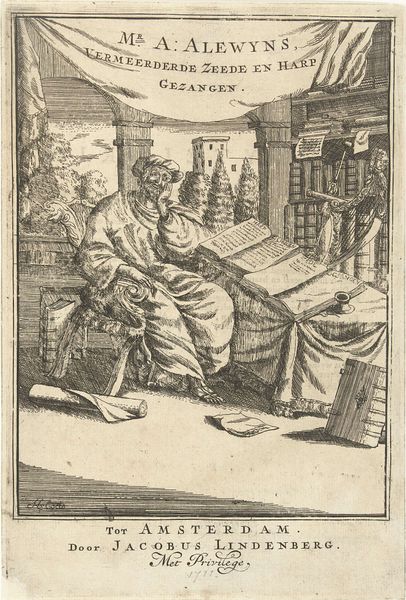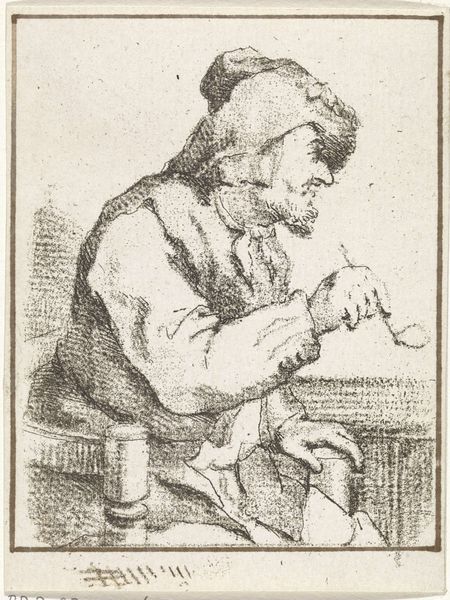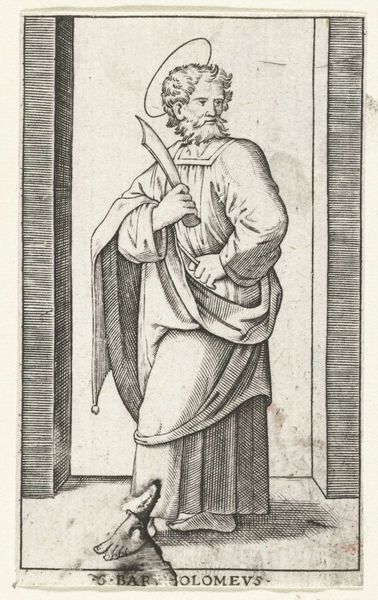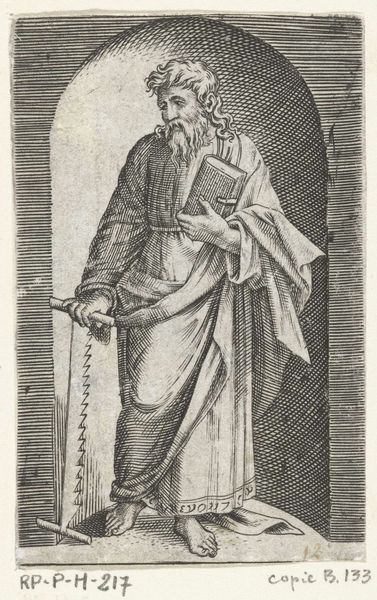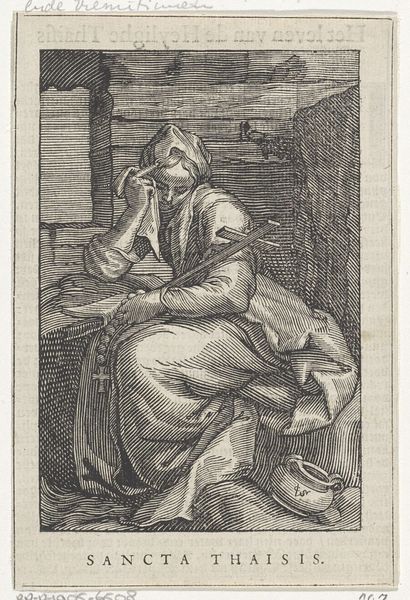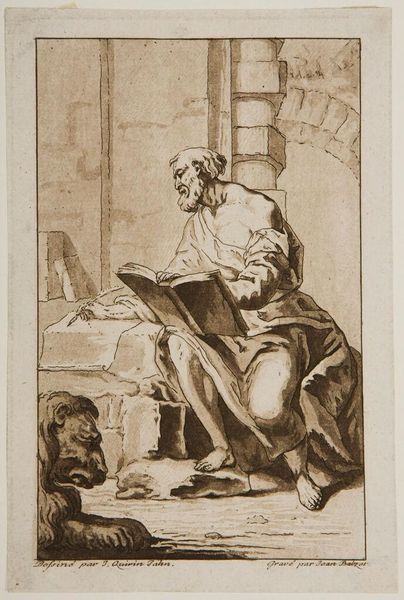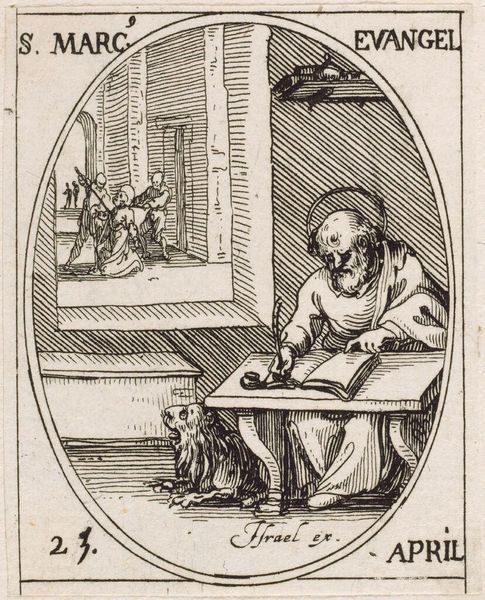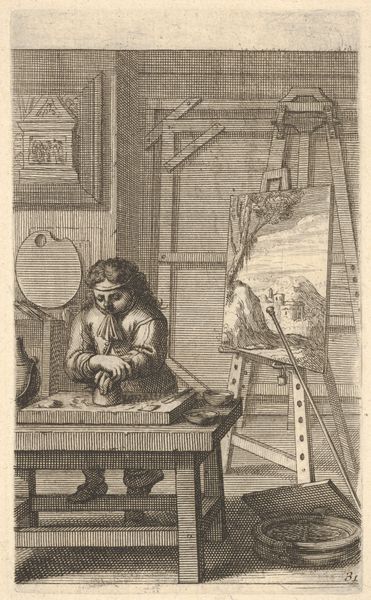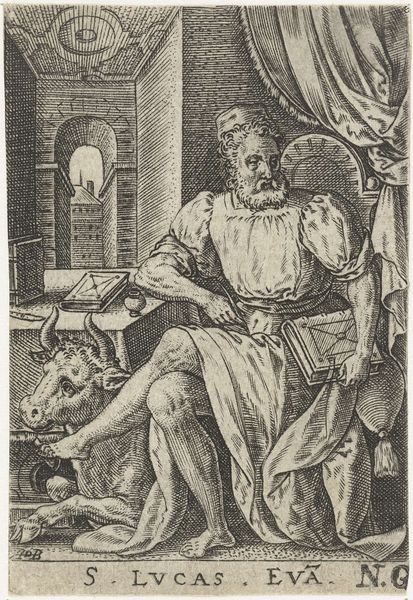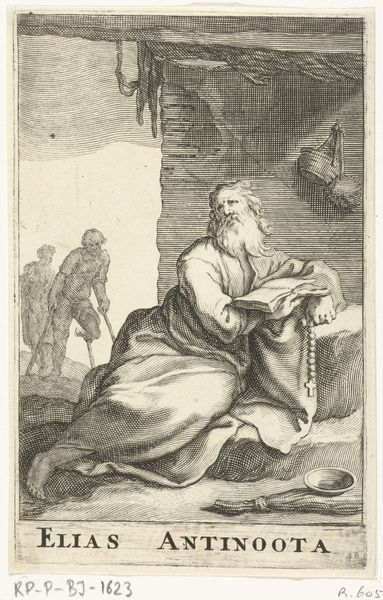
Zittende vrouw met doek over haar arm, voor haar staat een weegschaal op een tafeltje 1630 - 1665
0:00
0:00
salomonsavery
Rijksmuseum
print, engraving
#
portrait
#
baroque
# print
#
figuration
#
line
#
genre-painting
#
engraving
Dimensions: height 122 mm, width 82 mm
Copyright: Rijks Museum: Open Domain
Curator: Here we have a print, an engraving actually, made by Salomon Savery sometime between 1630 and 1665. It's titled, rather straightforwardly, "Seated Woman with Cloth Over Her Arm, a Scale on a Small Table Before Her". Editor: The initial impact is rather stark, isn’t it? It’s almost claustrophobic; the density of the lines really emphasizes the sitter's world, making it feel small and constrained. Curator: Precisely. That starkness reflects the direct, unflinching observation common in genre scenes from this period. Savery, in this particular instance, uses linear precision, characteristic of Baroque printmaking, to deliver not just an image, but an implicit social commentary. Editor: That scale seems pretty significant, don't you think? Especially coupled with the cloth she's holding. Does this reference, maybe, themes of justice or perhaps equity in daily commerce? It feels like more than just a simple, observational piece. Curator: Ah, you pick up on a crucial point. Scales, universally, suggest evaluation. Given that this woman appears rather… careworn and seated near what seems to be trade scales, her image probably touches on fairness, measurement, and perhaps even an ironic twist on material worth. Consider the saying "weighing right and wrong"… Editor: The clothing also catches my eye. It’s nothing glamorous. A modest cap, simple garments, everything tells us something. I wonder, who exactly was Savery hoping to capture here, what narrative was he building with these specific visual ingredients? Curator: Good observation! We can consider that prints like these played a vital role in disseminating information and moral messaging to a broad public. Savery’s meticulous detailing served to normalize the image and also made people in those images relatable. Each line seems to serve both an artistic and social purpose. Editor: So it isn’t just what is depicted, but also who saw it. These images really show us a glimpse of life for everyday individuals of the period. Curator: Exactly. Ultimately, that is how the everyday becomes timeless. Savery transforms a fleeting observation into a resonant social artifact. Editor: Indeed. This humble engraving encourages one to pause and really consider the balance between symbolism, society, and, just, basic survival.
Comments
No comments
Be the first to comment and join the conversation on the ultimate creative platform.


